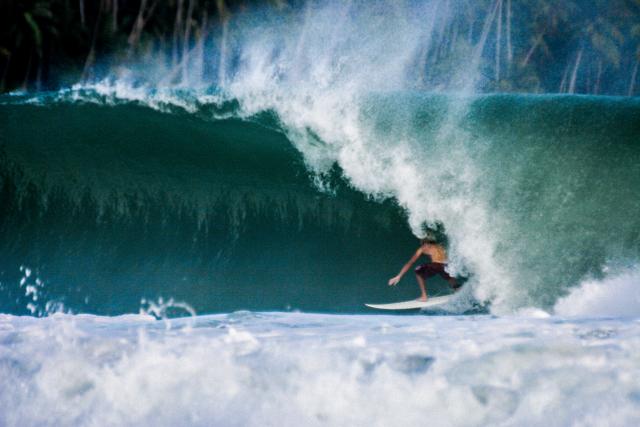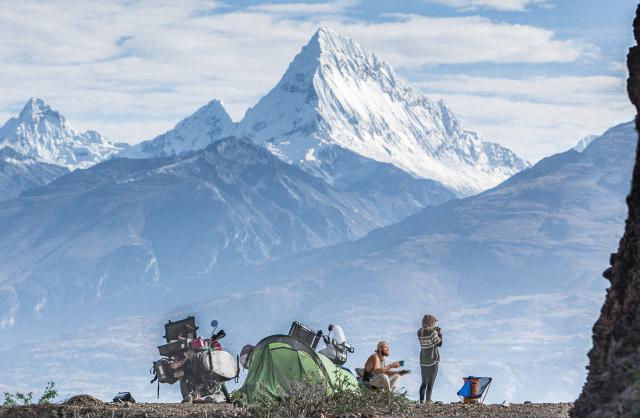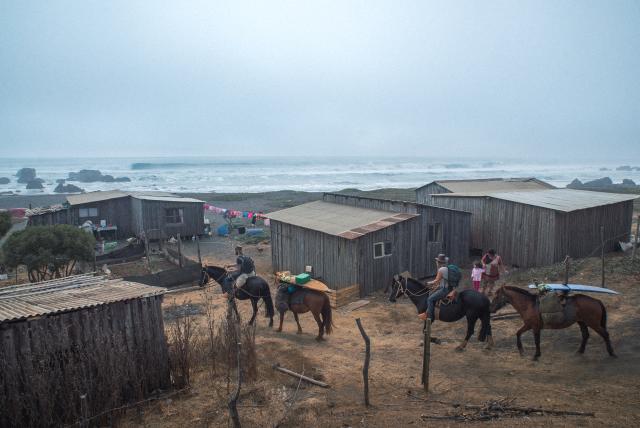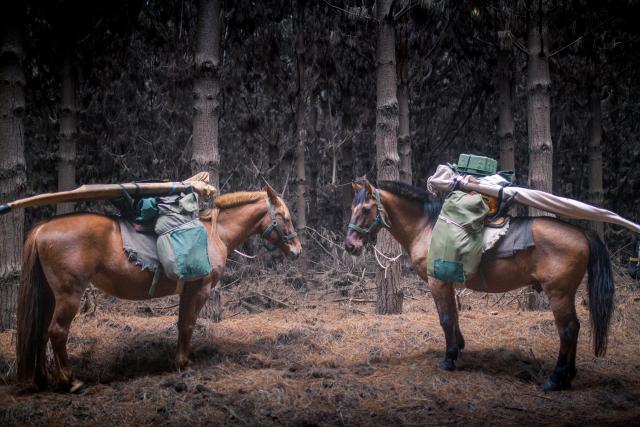
The Road to Patagonia has been sparking deep conversations from audiences since hitting the big screens, and now it’s the Noosa community’s turn to ask questions at The J Noosa on Thursday 15 February.
A 50,000km surfing odyssey turned love story may read like a generic film, but the theme of ecology underpins the entire documentary.
Shot over 16 years, the film follows director cinematographer Matty Hannon on an incredible solo adventure, to surf the west coast of the Americas by motorbike, from the top of Alaska to the tip of Patagonia.
But deep in the wilderness – alone with the wolves and the bears – his plans unexpectedly fall to pieces. After losing everything, and on the cusp of quitting he meets the girl of his dreams, a permaculture farmer named Heather Hillier who throws caution to the wind and sells her urban-farm to buy a bike of her own.
Together riding south, the duo meet with Zapatista rebels, Amazonian shamans and Mapuche leaders whose salient words crack the adventurers’ cultural veneer, leaving them with existential questions.
It was like stepping into the future being able to speak to Matty and Heather while watering their garden, with the couple now having a baby and living back in Australia.
Here’s five questions with The Road to Patagonia director cinematographer Matty Hannon:
1. Would you recommend travelling without a plan?
“I would definitely recommend travelling without a plan. I don’t know whether I would recommend going and making a feature film without having a plan. That was incredibly challenging. But also if I had have done a structured plan around it, it never would have been the film that it is. I don’t think any of the magic moments of the film which are really serendipitous would have ended up in the film.“
2. How does it feel to now have your story out in the world?
“Films that I enjoy are personal and so a big part of our film is that intimate relationship between Heather and I. But that’s not the reason we’re excited to be out and touring the film. The premise behind the film is more about how humans exist in the world in how we relate to each other and to nature. I think we’re exploring some reasonably underrepresented themes. It’s really rewarding to be meeting people who not only identify and have a good emotional response to the love story but also sparking conversations about how we exist as humans in the world, especially now when we’re seeing all manner of depressing statistics come up around the environmental crisis.“
3. How did you stay patient across the 16 year journey of creating the film?
“I think I started the journey in America about 10 years ago now, with the footage from 16 years ago coming from a different part of my life. I guess for us, we rarely had phone reception or a sim card. As far as patients go, we weren’t connected to the internet most of the time and so we just weren’t able to share much online. It was such an endeavour to do the shooting so to be able to edit on the fly and be posting to an audience regularly, I think would’ve changed the experience.“
4. There’s two Sunshine Coast events right at the beginning of our tour; at The J Noosa on Thursday 15 February and Maroochydore Event Cinemas on Saturday 17 February. Are you excited to visit this area?
“The event at The J in Noosa is almost sold out and I’m happily surprised about that because I don’t really know too many people in Noosa. So, to be getting bums in seats is a great thing. It does feel like the sort of film that might appeal to your Noosa community. We’re trying to explore some things that are on the edge of that surf culture; loving nature and loving each other. So we’re really excited to be coming up that way. I feel very privileged to be able to get on the road with our little family. We’ll be doing a surf trip up along the east coast.“
5. What can people expect from the event in Noosa?
“We’ll be doing a Q and A after the screening for the audience to be able to ask a few questions and to sort of dive a bit deeper to some of the scenes. One thing I’m really happy with is the film does seem to spark a few questions within people and some emotional responses. It’s nice to be able to provide a little bit more context for people.”
For more information, visit thej.com.au/road-to-patagonia/









